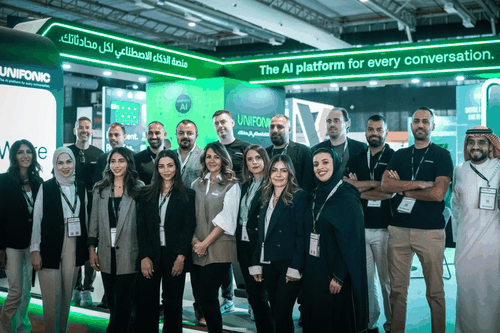
How Munson Healthcare proved employee engagement has the power to improve patient safety
Employees
7,500
Headquarters
Traverse City, Michigan
Industry
Healthcare

Statistics
8
hospitals
24-hour
turnaround for reports vs. previous 8-week delay
When Munson wanted to examine their employee engagement and patient safety data side by side, Culture Amp performed a linkage analysis to show them how the two were intrinsically linked – and how more engaged employees could lead to higher patient safety scores.
Munson Healthcare is Northern Michigan’s largest and leading healthcare system. Their team of medical experts and related organizations serve patients in eight award-winning community hospitals across 29 counties.
Sarah Robinson, Manager of Learning & Organizational Development, and Tiffany Likar, Senior Coordinator of Patient Experience, are both long-term employees. They started their respective careers at Munson in 2008. Sarah manages non-clinical learning, leadership and career development, and workplace culture, including employee surveys. Tiffany oversees all patient experience data and is responsible for implementing strategic goals for patient experience.
Munson has partnered with Culture Amp since September 2014 for annual employee engagement surveys and expanded their use of the platform to include onboarding, exiting, and pulse surveys. They appreciate the platform’s flexibility, customization options, benchmarking abilities, and the immediacy of the platform’s feedback and reporting.
Challenge: Attributing patient safety scores to employee engagement
Patient safety is the foundation of Munson Healthcare, and the organization has always felt it’s not only important to review patient safety results, but seek employee feedback for their perspective on patient safety. As of June 2022, a total of seven patient safety questions are present on the annual employment engagement survey, and the results have only reinforced Munson’s commitment.
“With the help of Culture Amp’s People Scientists, we have been able to measure just how much our nurses value patient safety. So, if we want to prevent nursing turnover, we have to continue to emphasize our strong focus on patient safety. What Culture Amp brings to the table, which we really appreciate, is the ability to make those kinds of connections,” said Sarah.
Post-COVID-19, Sarah and Tiffany dedicated themselves to different projects for improving employee engagement and patient safety, respectively. Intuitively, however, they both knew that the foundation for patient safety was an engaged workforce, but Tiffany wanted solid data and numbers to back up her hunch and help her present a strong case to the leadership team.
She reached out to Sarah’s team and asked to take a look at the employee engagement data, so she could compare it to the patient safety data. Sarah’s team asked if both departments should sit down together with Culture Amp.
Solution: Conduct a linkage analysis to examine all possible factors that affected employee engagement and patient safety
Culture Amp suggested a linkage analysis—a method used to identify associations between variables in different datasets. The method involves analyzing the degree to which two or more variables are related to each other, with the goal of identifying patterns of co-occurrence or dependence.
As part of this analysis, Culture Amp broke out Munson’s employee population into three segments:
- Patient facing: employees whose work involves direct interaction with patients and whose primary responsibility is patient care, like nurses and physicians
- Non-patient facing: employees whose work may involve interaction with patients and has an impact on patients, but aren’t directly responsible for patient care, such as billing staff, groundskeepers, and pharmacists
- Organizational: employees whose work involves little to no interaction with patients and who aren’t responsible for patient care, but who have an impact on other employees, like Munson senior leadership and IT
From there, Culture Amp examined how these employee populations influenced both one another and patient safety.
Results: Identified the key drivers that predict positive patient safety to improve action planning
For patient-facing employees, responses to the following statements around motivation helped predict positive patient safety scores:
- My department leadership lets me know when I have done a good job.
- The physicians/providers and staff here work together as a team.
- I would recommend this organization as a great place to work.
In other words, the data indicates that high levels of employee engagement amongst patient-facing employees drove patient safety, as those employees were more motivated to do their best work.
Neither Sarah or Tiffany were surprised. This was an expected result. What was more surprising was how clearly the linkage analysis demonstrated that patient safety correlated to the engagement of all other groups of employees as well, whether or not they were patient-facing employees—particularly the leadership team.
For example, the organizational employees’ response to, “I see myself here in two years’ time” could predict the patient-facing employees’ response to, “My department leader lets me know when I have done a good job,” which was one of the statements directly tied to patient safety.
“It was so powerful to see it up there on the screen. I am an organizational employee, but I used to be a nurse out there on the floor. And there is a perception amongst organizational employees that they don't affect patient safety, but the linkage analysis clearly said, ‘No, you do affect patient safety, no matter how far removed you are from the bedside.’ They affect it by providing support to those patient-facing employees,” said Sarah.
Organizational employees’ responses to the following statements also predicted how the patient-facing employees felt about working together as a team:
- I am appropriately involved in decisions that affect my work.
- I have access to the materials and equipment that I need to do my job well.
- I am proud to work at this organization.
It became clear that when organizational employees felt more committed, the culture improved for patient-facing employees, which led to better patient safety scores. The level of job commitment from the organizational employees impacted how much this group advocated for Munson, which, in turn, drove the stability that allowed department leadership to be more deliberate and thoughtful about creating Munson’s culture.
“We could see that if the staff didn’t feel supported by leadership, or they felt like they didn't understand leadership initiatives, that had a trickle-down effect. They didn’t feel like they had all the tools they needed to fully support patient safety in the way that they wanted to,” said Tiffany.
Culture Amp confirmed and validated that the success of implementing improvement processes around patient safety scores and changing employee behaviors will be much greater when strong employee engagement is in place. Employee engagement is actually what affects patients.
“I was extremely impressed with the analysis. I didn't think that you could take two completely different sets of data from completely different sides of the hospital spectrum and bring them together to produce such a fulfilling story,” said Tiffany.
Looking ahead: Focusing on holistic employee engagement with the intention of improving patient safety
Now, Sarah and Tiffany have validated data, backed by Culture Amp’s People Science, to show that patient safety is directly linked to the patient-facing employee experience.
“When we go to our employees, we can say, ‘When you work together as a team, your patients have better outcomes,’ and actually show them the connection,” said Sarah.
They can also help the leadership team understand that engagement among this group can be affected directly and indirectly. In other words, if Munson wants to improve patient safety, they can't just focus on one group of employees, they need to focus on the organizational as a whole.
As a result, Munson is dedicated to creating more programs and opportunities that drive holistic employee engagement and stronger organization-wide connections to the leadership team. The linkage analysis has become a tool to help garner broad support for the initiative.
“One thing I took away from the analysis is the importance of breaking down silos. We brought two totally separate areas of the hospital together, found data that helps us tell the story of patient safety, and demonstrated how it’s linked to employee engagement. Now, we have the numbers that show leadership support and a connection to leadership is so important for patient-facing employees, because it directly impacts our foundational work with patients,” said Tiffany.
The linkage analysis has changed the way Sarah’s department communicates with Munson’s employees as well. As they begin to share recent survey results, they’ve taken care to call out the connection between employee engagement and patient safety, so an understanding of the correlation can spread throughout the organization.
“Culture Amp provided a level of statistical analysis that we don't often understand or think about. They have a specialized knowledge base beyond that of a typical HR healthcare worker. Our relationship is super valuable, and we’re excited to continue growing with them and breaking down barriers,” said Sarah.






